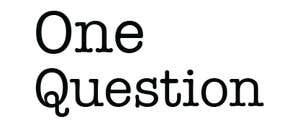This spring, I had the pleasure of sitting in a crowded school gym in middle America and watching my eldest son cross a stage and shake a few hands to mark his successful completion of middle school. Such events, with their mix of characters, settings, and agendas, have one clear and consistent feature: abundant applause.
The organizers of my son’s ceremony sought to head off the outbursts of clapping and hollering that are wont to emerge at these affairs. “Please refrain from excessively celebrating when your graduate’s name is called so that we can progress through the list and everyone can hear their student announced,” they asked before launching into the rollcall with its 350 or so names. Fair enough.
But then something strange happened. Once the first student’s name was called, a small group of people (their family, I presumed) clapped in unison. One coordinated, staccato clap. Playful acquiescence to the rules. A giggle rippled through the room. But then, as more names were read aloud, the joke reverberated. In short order, every announced name elicited that single, synchronized clap from the crowd. And not just from family and friends gathered to celebrate their graduate. From everyone. The whole audience began to clap in unison after every name. Audrey Benson. Clap. Charlie Cronhour. Clap. Anastasia Davidson. Clap.
This emergent phenomenon got me thinking about lots of things: synchronous behaviors in humans, the sociology of groupthink, how sound travels in a gymnasium. So when a little publicized Physical Review Research study on the physics of clapping made the media rounds shortly afterward, I realized I hadn’t considered the acoustics of applause itself.
Turns out that science had yet to fully elucidate the intricacies of sound produced by two hands brought rapidly together. A team of researchers led by scientists at Cornell University reported that the acoustics of a clap have more to do with the movement of air than they do with the physical smacking hands. You see, when people clap, a tiny pocket of air forms between their palms. When the air jets from this curled space, its molecules rapidly vibrate. This creates the noise familiar to symphony audiences and commencement attendees across the globe.
With an impressive variety of experimental methods—including recordings of clapping humans and models of soft plastic hand replicas—the researchers dissected the physics involved in several types of claps. They liken the vibration of clapped air pockets to the sound produced by a person blowing across the top of a bottle, a classic demonstration of Helmholtz resonance, which describes sound that emanates from an enclosed volume with a small neck and an opening at one end.
Even if I still wonder about what psychosocial forces might compel humans to repeatedly clap in unison at a middle school graduation ceremony, I for one applaud this effort to explain the physics of applause. ![]()
Lead image: beast01 / Shutterstock
































